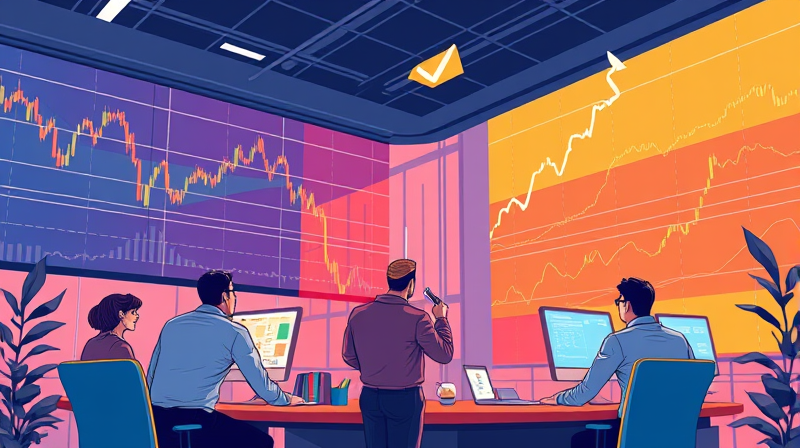
The dramatic depreciation of the dollar in early 2025 has spurred a profound shift in global equity allocations. Investors worldwide are reassessing risk, rebalancing portfolios, and seeking new frontiers for growth.
In 2025, the US dollar’s slide—down roughly 8.5% by late May—has reversed years of strength. A confluence of divergent central bank policies and geopolitical uncertainties has amplified foreign exchange movements. Trade disputes, emerging-market pressures, and shifting rate expectations have all contributed to unprecedented currency swings.
Models like purchasing power parity (PPP) and the Dollar Equilibrium Exchange Rate (DEER) still suggest an overvalued dollar, but the true catalyst has been macro policy shifts: from rate cuts to targeted FX interventions. Such interventions aim to contain speculative flows and dampen volatility, yet their effects often prove short-lived without broad economic alignment.
The sudden dollar weakness in early 2025 inflicted heavier losses on unhedged global portfolios. Non-US investors found their dollar-denominated positions suffering amplified drawdowns, prompting a rush to increase hedge ratios.
Large institutions now deploy a suite of derivatives—forward contracts, currency swaps, and options—to guard against further slides. Even marginal upticks in hedging demand have translated into sustained dollar selling, adding downward pressure on its exchange rate.
Simultaneously, asset allocators have accelerated a strategic portfolio rebalancing toward non-US equities. Non-US stocks outperformed their US counterparts by 10% year-to-date through April, one of the widest gaps in half a century. This performance disparity catalyzed inflows into Europe, Asia, and select emerging markets, as investors chase relative value and growth potential.
Despite US-listed equity ETFs still holding 80% in domestic stocks as of February 2025, flows are gradually tilting abroad. Investors are overcoming traditional home bias, drawn by diverse global opportunities and attractive valuations.
This incremental allocation shift is unlikely to become a sudden divestment; rather, we expect a measured rebalancing that steadily nudges global weights away from the US, further pressuring the dollar.
Heightened currency fluctuations have emerged as a systemic risk for trade. According to the WTO and IMF, a 5–7% swing in the Indian rupee alone has materially affected export competitiveness and import costs for energy and electronics. Manufacturers and distributors must now adopt dynamic currency hedging strategies and revise procurement policies to protect margins.
Trade finance desks are increasingly integrating real-time FX risk analytics. By forecasting currency scenarios, firms can lock in costs and optimize invoice currency choices. This proactive approach helps maintain stable margins amid volatile exchange rates.
Central banks in both developed and emerging markets are intervening to curb excessive FX swings. Some have tapped foreign exchange reserves, while others adjust policy rates to influence capital flows. In emerging economies with deeper derivatives markets, institutions are leveraging futures and options to cushion abrupt moves, though speculative flows sometimes exacerbate volatility.
Coordinated policy actions—such as synchronized rate moves or joint FX statements—have proven more effective at stabilizing markets than unilateral interventions. Yet, any long-term solution hinges on addressing underlying economic imbalances and restoring investor confidence.
In response to this new era of volatility, institutional and retail investors alike are exploring advanced tools:
These innovations enable investors to tailor hedging levels dynamically, balancing cost and protection. They also foster greater operational resilience by providing transparent, audit-ready controls over FX exposures.
Emerging economies face unique challenges in this environment. Sudden outflows can trigger currency stresses, higher import costs, and tighter financing conditions. At the same time, weaker local currencies can boost export competitiveness and foreign direct investment.
Capitalizing on these conditions requires governments and corporates to deepen domestic hedging markets, enhance FX liquidity, and strengthen macroprudential frameworks. Countries that invest in these structural reforms will better withstand shocks and attract long-term capital inflows.
As currency landscapes evolve, investors must blend strategic vision with tactical agility. Embracing cross-border equity diversification can unlock new growth avenues while disciplined hedging safeguards returns. Companies should strengthen treasury practices and leverage advanced analytics to stay ahead of market swings.
Ultimately, the dollar’s decline in early 2025 has served as a wake-up call: global portfolios must adapt or risk obsolescence. By rebalancing intelligently and managing FX risk proactively, both investors and corporates can transform volatility into opportunity—and forge a more resilient financial future.
References













